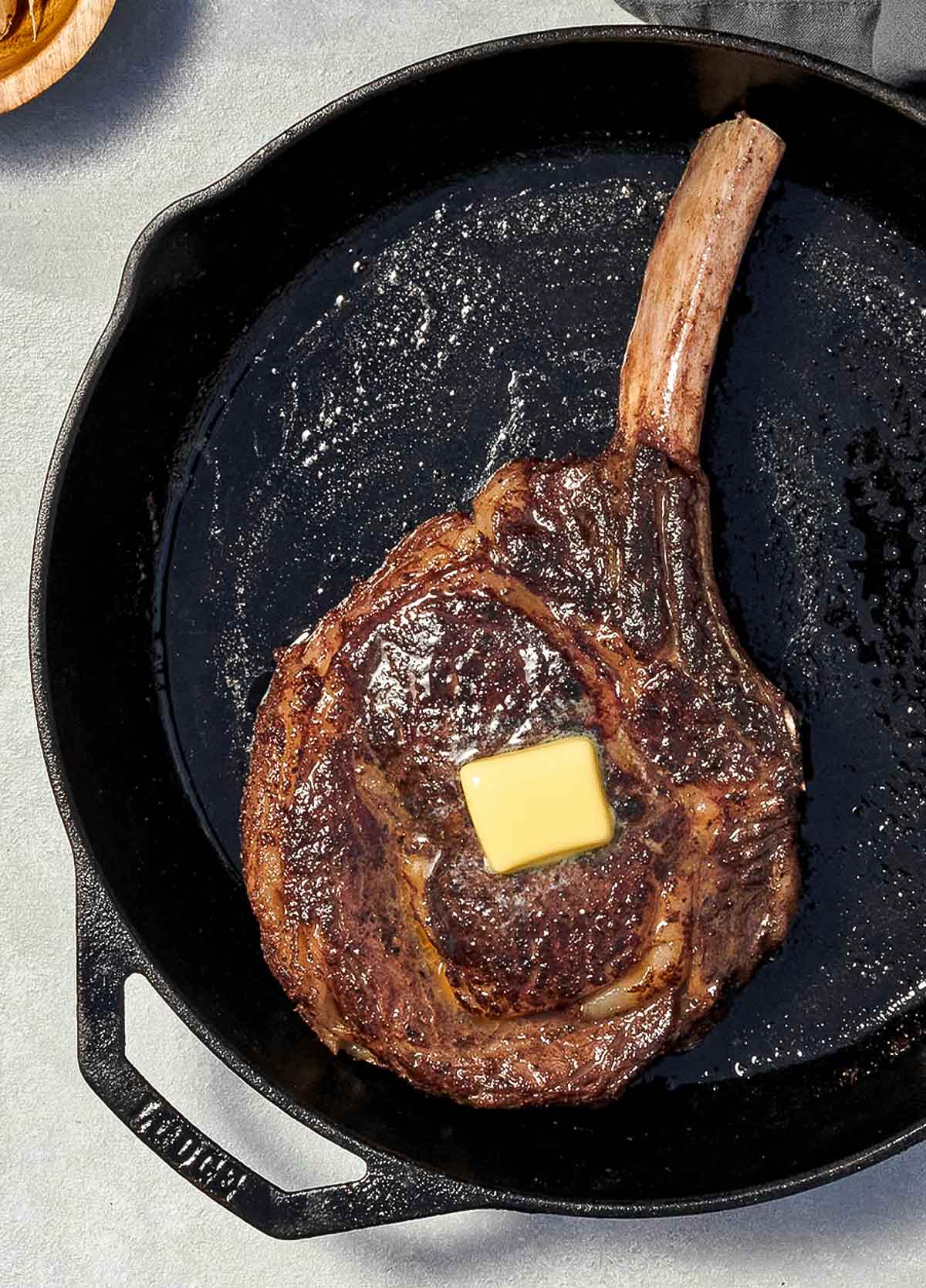
A few tips for those who want to knock this out of the park: 1. Lower the temperature of your fire and skillet before you baste. Butter has a bad tendency to burn over high heat. 2. Okay, yes, lowering the temperature is not as easy with a fire as when using the stove. Lowering a fire’s temperature can be done quickly, though, by spreading out the coals or removing some coals from the fire. Don’t overthink it! 3. Place the garlic on the steak while basting as it will melt into the steak while cooking.–Derek Wolf
How Do I Keep Steak From Sticking to Cast-Iron?
If you’re used to cooking steaks in a non-stick pan, then you might find cooking one in cast-iron to be a little, well, stickier. But cast-iron creates a much better sear on meat, creating that delicious fond (the browned bits that caramelize, stick to the bottom of the pan and make an incredible pan sauce) that you don’t get with non-stick cookware. Part of that process is the actual bonding of the meat to the metal surface of the pan, creating that “stuck on” feeling. This, however, is a good thing. If you oil your pan first, then get it nice and hot before adding the meat, you’ll find that the crust forms quickly. Once the crust is built up and the meat is seared, the bonds between the protein and the cast-iron loosen and you can easily flip it over.
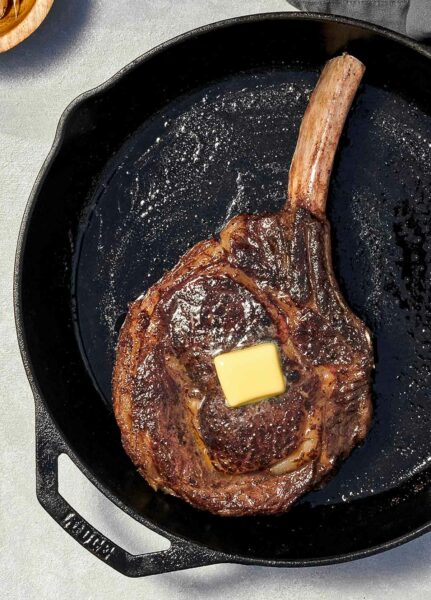
Seared Rib Eye Steak with Cinnamon
Ingredients
- 2 teaspoons sea salt
- 2 teaspoons freshly ground black pepper
- 1 teaspoon ground cinnamon
- 1 (1 1/2 lbs) bone-in rib eye steak
- 1 tablespoon plus 1 teaspoon mild vegetable oil
- 4 tablespoons (2 oz) unsalted butter
- 3 or 4 garlic cloves, peeled and smashed
Instructions
- In a small bowl, thoroughly mix the salt, pepper, and cinnamon.
- Lather the steak with 1 tablespoon oil. Season all sides of the steak with the spices, making sure not to miss the sides. Set the steak on a plate, cover, and refrigerate for 10 minutes.
- Set your grill up for two-zone cooking and preheat to a medium-high temperature (about 375°F or 190°C).
- Drizzle 1 teaspoon oil into a cast-iron skillet and set over direct heat to preheat for 2 minutes before cooking.
- Carefully add the rib eye to the skillet and sear until a crust forms, 30 to 45 seconds per side. Shoot for a nice crust everywhere, so sear the edges of the steak on the sides of the skillet, if necessary.
- Move the skillet to the indirect zone, move the steak to a plate and lower the temperature of the grill to a medium heat (about 325°F or 170°C).
- Return the skillet to the direct cooking zone and add the butter to the skillet to melt. Once melted, place the steak back into the skillet and place the garlic on top of the steak. Cook, basting the warm butter over the steak with a spoon for 2 to 3 minutes. Flip the steak, place the garlic back on top, and continue cooking and basting until it is cooked to your desired doneness, about 3 minutes for medium-rare.
- Move the steak to a plate, cover, and let rest for 5 minutes before serving.
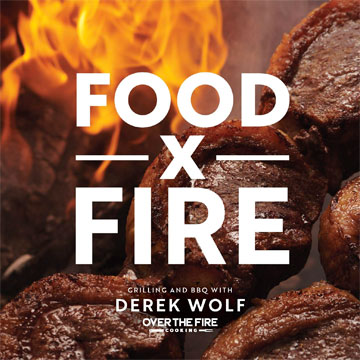
Explore More with AI
Nutrition
Nutrition information is automatically calculated, so should only be used as an approximation.
Recipe Testers’ Reviews
Unexpected deliciousness! Whenever I try a recipe on the grill that includes a pan, my husband just can’t figure out why you’d put something in a pan and not directly on the grill. I was questioning the cinnamon. In the end, we were both pleasantly surprised. The seared rib eye steak with cinnamon was super tender and so juicy and flavorful. The cinnamon I was wondering about added such a nice flavor and smell to the meat. Using the pan on the grill keeps all the nice flavor from the meat and the melted butter, which went well with mashed potatoes.
I’d never have thought to use cinnamon with a steak, so this recipe for seared rib eye steak with cinnamon was a revelation. The cinnamon was not overly assertive; it gave a subtle bit of warmth to the salt and pepper crust of the rib eye. I cooked the steak in cast-iron on the stove, and crushed and peeled the garlic before adding it to the basting butter for more flavor. In less than thirty minutes I had a perfect medium rare steak dinner for the two of us, served with a Little Gem salad.
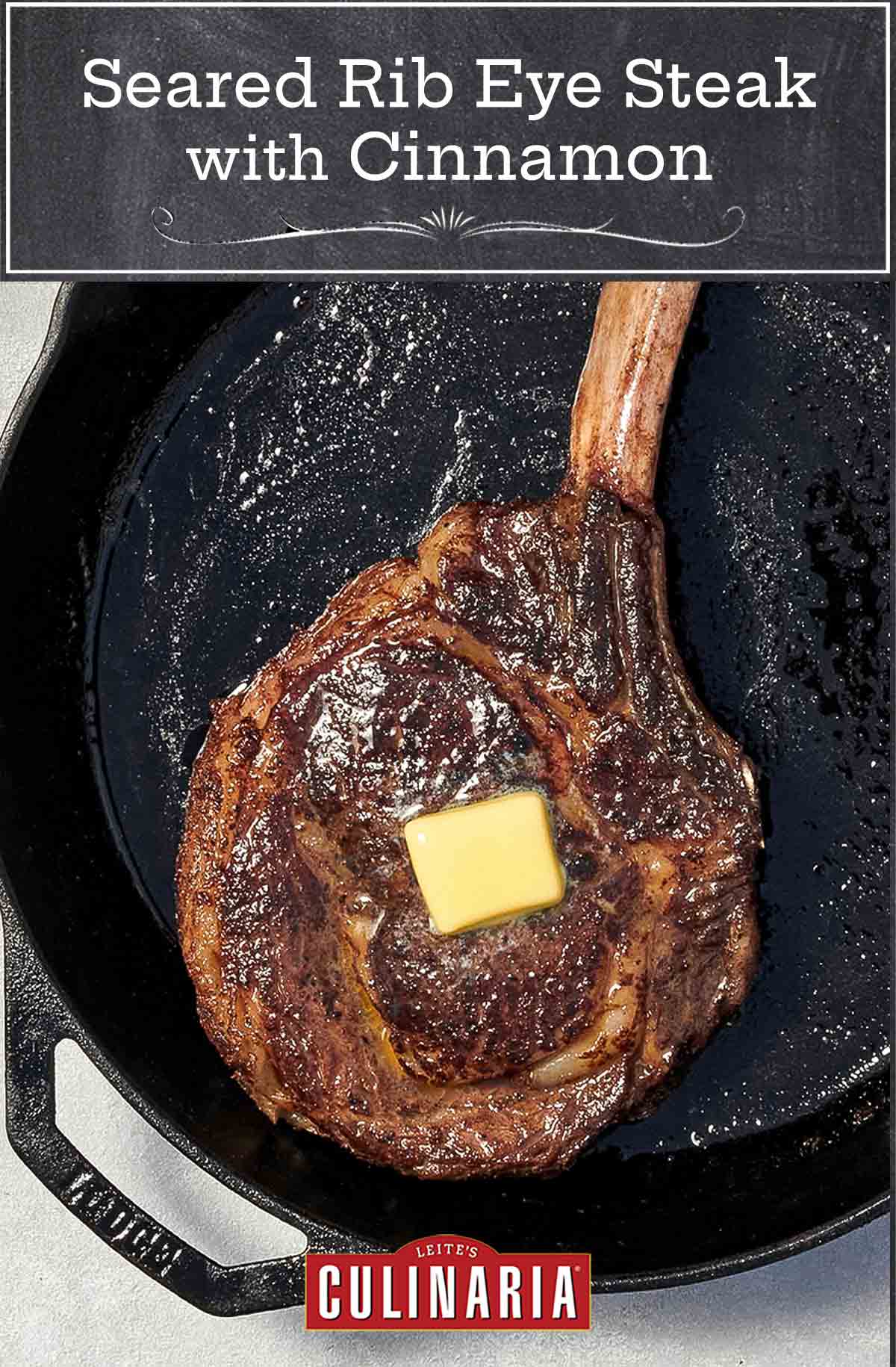
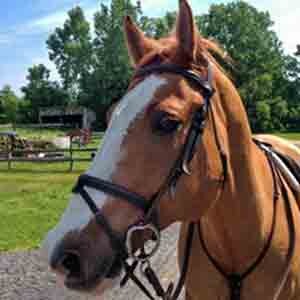










Can someone explain to me what paying for a chunk of bone does for the flavor or tenderness of a rib steak? I mean the superfluous bone in the “tomahawk”.
It seems like something brought to us by a TV “chefutainers”.
bkhuna, although many people believe the bone adds flavor to the meat, the true value of the bone is that it provides insulation, which slows the cooking process, allowing for an even cook and less surface area for moisture to be lost from. In the case of a tomahawk, yes, part of that bone is for presentation, but the part attached to the meat does serve a purpose.
The amount of surface area exposed to the heat in grilling is almost exclusively the two large flat sides of the steak. An attached bone is mathematically small in area. The “bone slows down the cooking process” is another of those old kitchen myths. If your talking about a bone in rib roast, you have a very large portion of the roast insulated by the rack of bones. But with something like a steak, there is very little bone by area. Follow the science.
Granted, my dog loves to gnaw on the bone and the presentation is nice, but I’ll pass on paying $15.00 a pound for a handle. The whole tomahawk thing is piffle.
We’ll have to agree to disagree on this one, Bkhuna. If you grill a t-bone or other bone-in steak, the meat nearest to the bone will be rarer than the rest of the steak because the bone has absorbed some of the heat. In the end, it’s truly a matter of preference.
Plus, you pay more per pound for a boneless cut than a bone in. I’d do the math and decide. Granted there are times & recipes that I prefer to use boneless. I’m going to try this recipe this weekend.
Thanks, Peggy!